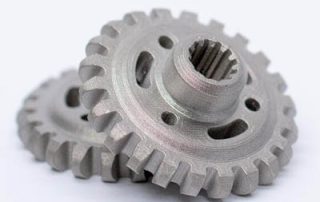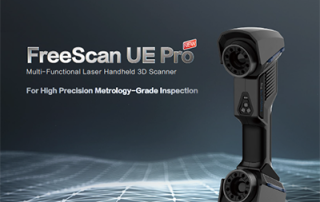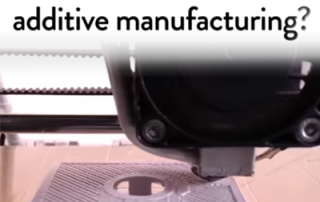Desktop Metal Nickel Alloy Inconel 625
Desktop Metal Qualifies Nickel Alloy Inconel 625 for Additive Manufacturing on the Studio System 2 Recently Desktop Metal announced that they qualified the use of IN625 for the Studio System, a turnkey metal 3D printing platform that offers customers the easiest way to print high-performance metal parts in low volumes for pre-production and end-use applications. The Desktop Metal Studio System platform now offers more materials than any other metal extrusion 3D printing system on the market, a total of eight in all. In addition to IN625, Studio System users can now print titanium alloy Ti6Al4V (Ti64), copper, 4140, two tool steels (H13 and D2), and two stainless steels (17-4PH and 316L). Shipments of IN625 are available now. “The Studio System 2, which features our streamlined and easy-to-use two-step process, remains the most flexible metal 3D printer in its class,” said Ric Fulop, Founder and CEO of Desktop Metal. “It’s never been more important for manufacturers to have the agility of on-site, on-demand metal production, and the Studio System is a perfect gateway into metal 3D printing for production. Adding IN625 to the portfolio only amplifies the flexibility of this proven system.” IN625 for High-Strength, High-Performance Flexibility IN625 is a high-performance nickel alloy known [...]
More Math Calculations Available with Control X
There are many analytical tools available in Control X under the Measure command that are extremely useful. This edition of Metrology Minute will explore common measurements that could prove useful to metrologists. Measure Distance is a quick way of determining the approximate length of a blade, in this example, without going through the trouble of creating a 2D or 3D dimension. Just a quick vertex selection of opposing ends quickly returns an approximate distance. Measure Volume calculates the volume of material within a fully enclosed (sometimes called “a water-tight”) mesh file. This can be a very handy tool to explore the volume of material required to produce a 3D Printed model. Volume would be provided in cubic units (i.e., in^3, mm^3, etc.). Surface Area can be a useful tool when measuring the individual blade surfaces. It can come in handy to determine the surface area of a blade on a turbine. Units here would be in^2, mm^2, etc. Lastly, Virtual Calipers can also prove very useful by simulating actual calipers on the model and taking random measurements. The image below illustrates measuring the width of the blade at the very edge of the model. The actual nominal value is .06” so this is [...]
Introducing the New Freescan UE Pro Laser Scanner
The Freescan UE Pro is our latest and most impressive handheld laser scanner. Similar to the UE11 and UE7, the UE Pro also has settings for reflective and black parts, making it a very durable option to scan multiple part textures without the need to spray the surface. Developed by Shining 3D, this scanner’s accuracy specification is +/- 20 microns or +/-.00079”. More importantly, the Pro’s resolution can be dialed into an incredible 10 microns or .00039”. Resolution is a scanner’s ability to capture fine detail. Many scanner manufacturers refer to resolution as “point spacing” or “point density.” So when set to 10 microns, this scanner can essentially capture sharp edges on parts. While the UE Pro has an incredible resolution for capturing tiny details, it also has built-in Photogrammetry for error reduction when scanning very large objects. Unlike many scanners that deploy photogrammetry, the UE Pro doesn’t require serialized targets to be placed onto the object. Two scale bars that come with the scanner are all that are needed to tie photogrammetry into your scanning sessions. Finally, through a USB3.0 connection, the 26 crossing lasers can scan at an incredible rate of 1.85 million points/second, making the scanning of very large objects [...]
Is Additive Manufacturing the Same as 3D Printing?
Reprint from Additive Manufacturing Some say yes and we say no! Additive Manufacturing (AM) and 3D printing are overlapping terms but not synonyms. 3D printing is the operation at the heart of additive manufacturing, just as “turning” or “molding” might be the operation at the heart of a conventional manufacturing process. In a nutshell, 3D printing is one step in an overall additive manufacturing workflow that also includes design, build preparation, postprocessing, business considerations, and more. Importantly, “3D printing” does not describe just one type of technology. Per ISO/ASTM, there are seven different “families” of 3D printing processes and a growing number of material and machine options. Read the Full Story Here Our Additive Manufacturing Solutions
3D Printed Electric Dirt Bikes
A reprint from Additive Manufacturing New Electric Dirt Bike Is Designed for Molding but Produced Through 3D Printing Cobra Moto’s new all-electric youth motocross bike could not wait for mold tooling. Parts have been designed so they can be molded eventually, but to get the bike to market, the production method now is additive manufacturing. Sean Hilbert, president of Cobra Moto, says manufacturers make a mistake in the way they justify additive manufacturing capability. “We cost it wrong,” he says. If the expense of a production AM system is amortized across the parts it produces — the typical way to account for production capital equipment — then the unit cost of each 3D printed component is apt to be high. Additive manufacturing is often subject to bursts of activity, producing parts as they are needed. Read the full article More info on 3D Printing







